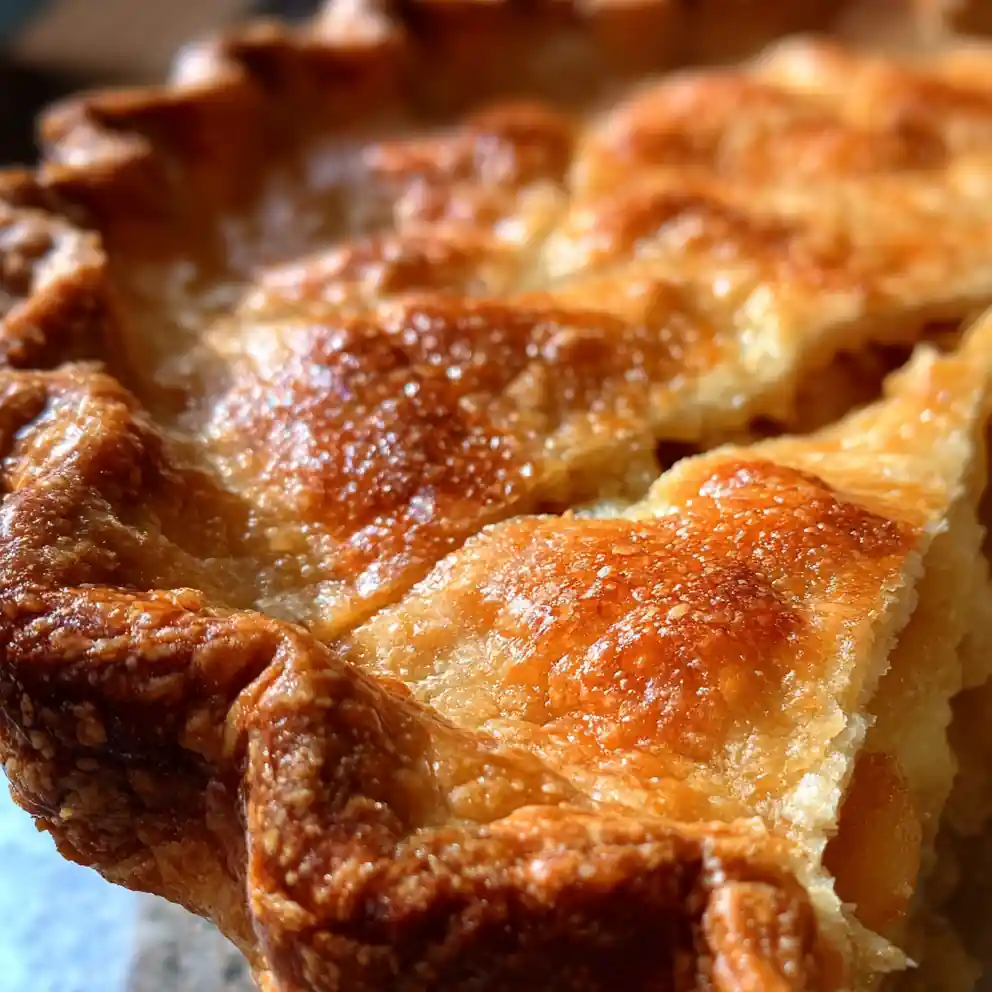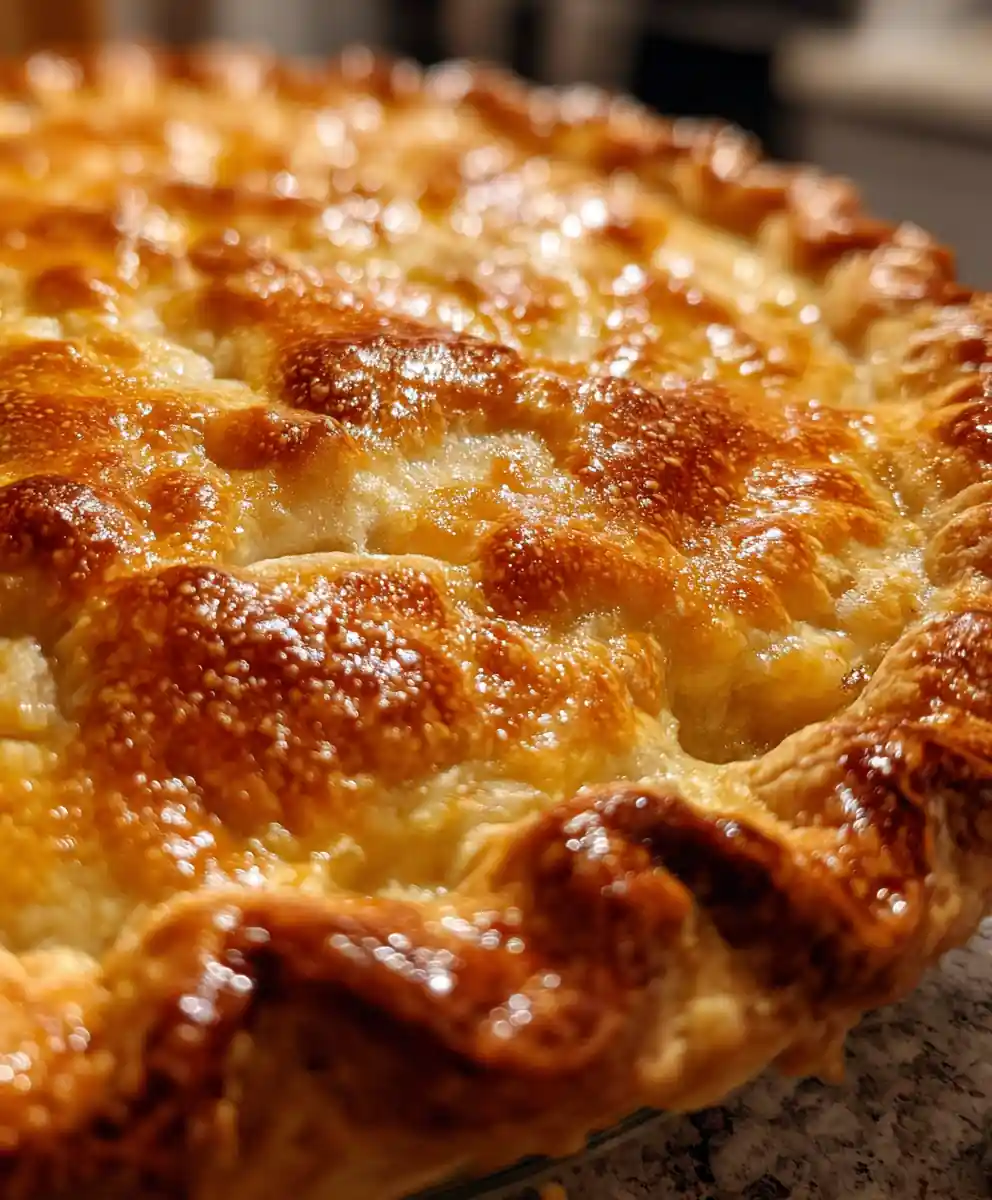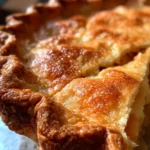
Ingredient Essentials & Substitutions
Crafting a truly exceptional Gluten Free Pie Crust Recipe Buttery and Flaky begins with selecting the right ingredients. Here’s what you’ll need:
- High-quality gluten-free all-purpose flour blend: 2 ¼ cups (270g) – Choose a blend without strong bean flavors for a neutral base.
- Unsalted butter: 1 cup (226g), very cold and cubed – Essential for achieving a flaky texture and rich flavor. (For a dairy-free pie crust, use a high-quality vegan butter alternative like Miyoko’s Kitchen Cultured Vegan Butter in the same quantity.)
- Ice water: 6-8 tablespoons (90-120ml) – The cold water helps keep the butter firm, contributing to flakiness. Adjust as needed; you might use slightly more or less.
- A pinch of salt: ½ teaspoon (3g) – Balances sweetness and enhances overall flavor.
- Optional granulated sugar: 1 tablespoon (12g) – Adds a touch of sweetness for dessert pies. (Omit for savory dishes like quiches or chicken pot pie.)
For health-forward upgrades, consider using a GF flour blend that incorporates whole grains for added fiber. Opting for organic, grass-fed butter can also improve flavor and provide beneficial nutrients.
When shopping, remember that fresh, high-fat butter makes a significant difference in the final texture of your Gluten Free Pie Crust Recipe Buttery and Flaky. Always buy quality ingredients from trusted sources for the best flavor and texture in your family-friendly baking.
Step-by-Step Cooking Method
Follow these precise steps to create a perfect Gluten Free Pie Crust Recipe Buttery and Flaky that’s easy and dependable:
- Combine dry ingredients: In a large mixing bowl, whisk together the GF flour blend, salt, and the optional granulated sugar until well combined. This ensures even distribution of flavors.
- Cut in butter: Add the very cold, cubed butter to the flour mixture. Using a pastry blender, two knives, or your fingertips, quickly cut the butter into the flour until the mixture resembles coarse meal with some pea-sized crumbs. This usually takes about 5-7 minutes; avoid overworking the butter to keep it cold.
- Add ice water: Gradually add ice water, 1 tablespoon at a time, mixing gently with a fork or spatula. Continue adding water until the dough just barely comes together when pressed. Stop mixing as soon as it holds, typically within 3-5 minutes, to prevent a tough crust. If it appears too dry or crumbly, incorporate an additional teaspoon of ice water at a time until the dough cohesively forms.
- Form and chill: Gently gather the dough into a disk, wrap it tightly in plastic wrap, and refrigerate for at least 30 minutes, or up to 2 days. This chilling period is crucial for the butter to firm up, making rolling easier and ensuring maximum flakiness later. I find chilling the dough for at least an hour truly makes a difference in handling.
- Roll out: On a lightly floured surface (use GF flour for dusting), roll the chilled dough into a 12-inch circle, about ⅛-inch thick. Ensure consistent thickness for even baking. Gently transfer the dough to a 9-inch pie dish, carefully pressing it into place. This step takes approximately 5-7 minutes.
- Crimp and bake: Trim any excess dough from the edges, leaving about a ½-inch overhang. Crimp the edges as desired for a decorative finish. If your recipe requires it, blind bake the crust: preheat your oven to 375°F (190°C), line the crust with parchment paper, fill with pie weights, and bake for 15-20 minutes until the edges appear set. Remove the weights and parchment, then bake for another 5-10 minutes until lightly golden brown.
For a spiced crust variation, stir ½ teaspoon of cinnamon or ¼ teaspoon of nutmeg into the dry ingredients in step 1. To achieve a beautiful golden sheen on your baked pie, brush the crimped edges with a beaten egg wash before baking.
Serving Ideas and Meal Contexts
This Gluten Free Pie Crust Recipe Buttery and Flaky is perfect for holiday pies like apple, pumpkin, or pecan. It also shines in savory quiches for brunch or elegant fruit tarts for dessert. It’s your dependable base for family dinners and gatherings, ensuring delicious gluten-free options are always on the menu.
- Sweet fillings: Apple, berry, cherry, pumpkin, pecan, chocolate cream, lemon meringue.
- Savory fillings: Chicken pot pie, quiche Lorraine, spinach and feta tart.
Unbaked dough disks can be chilled for 2 days or frozen for up to 3 months when wrapped tightly in plastic and foil. Thaw frozen dough overnight in the refrigerator before rolling. Store baked pies according to their filling; most last 3-5 days in the fridge. Reheat baked pies gently in a low oven (around 300°F/150°C) for optimal texture.
Lifestyle & Nutrition Gains from a Buttery, Flaky Gluten Free Pie Crust
- Enjoy delicious pies and baked goods without gluten-related discomfort, fitting various dietary needs.
- This Gluten Free Pie Crust Recipe Buttery and Flaky offers a satisfying, family-friendly treat for households with mixed dietary requirements.
- Serves as a fantastic base for incorporating high-fiber fruit fillings, promoting healthy eating.
- Allows for mindful eating by providing control over ingredients compared to store-bought options, supporting easy healthy desserts.
This versatile crust is naturally gluten-free and suitable for celiac-friendly diets. It can be easily made dairy-free with a high-quality vegan butter substitute, opening up plant-based options for your meal prep recipes.
Convenience & Budget Value
This recipe boasts only 10-15 minutes of active prep time, plus chilling. The hands-on work is surprisingly fast, making it ideal for quick meals or special occasion baking.
Making your own Gluten Free Pie Crust Recipe Buttery and Flaky is significantly more affordable than buying pre-made gluten-free crusts, often costing less than half per serving. It primarily uses common pantry staples you might already have.
- Buy gluten-free flour blend in bulk when on sale.
- Look for butter sales and stock up.
- Making your own helps you avoid expensive, last-minute store-bought alternatives.
For make-ahead gluten-free baking, I always double or triple the recipe and freeze extra dough disks; just thaw them in the fridge overnight when ready to bake. This makes future pies a total breeze for busy families.
Ingredient Shopping & Online Ordering
Most major supermarkets carry a wide selection of gluten-free flour blends and quality butter needed for this Gluten Free Pie Crust Recipe Buttery and Flaky. Local farmers’ markets often offer fresh, high-quality dairy products too.
- Look for certified gluten-free flour blends to ensure no cross-contamination.
- Choose unsalted, high-fat butter for the best flavor and flakiness.
- Always check expiration dates on all ingredients.
Online retailers like Thrive Market, Amazon, or specific gluten-free online stores (e.g., Gluten-Free Mall) often have a wider selection of GF flour blends or specialized vegan butter brands, offering convenient options for organic ingredients.

Expert-Level Tips & Adjustments for a Flaky Gluten Free Pie Crust
- Keep everything cold! Chill your mixing bowl and even your flour blend in the freezer for 15 minutes before starting.
- Handle the dough as little as possible to prevent gluten development and warm the butter.
- For an even flakier crust, use a combination of unsalted butter and high-quality shortening.
- For a sweeter crust, add an extra tablespoon of granulated sugar.
- For a savory crust, omit the sugar and consider adding a pinch of garlic powder, onion powder, or dried herbs like thyme or rosemary.
- Always ensure all your ingredients are certified gluten-free to avoid cross-contamination for those with Celiac disease.
- For nut allergies, verify your chosen GF flour blend does not contain almond flour or other nut-based ingredients.
FAQs about Gluten Free Pie Crusts
Can a Gluten Free Pie Crust be part of a healthy weight plan?
Yes! When paired with healthy fillings like fresh fruit or lean savory options, it allows you to enjoy pies while managing gluten intake. Portion control is essential for any treat, ensuring it aligns with your healthy eating goals.
What’s the best substitute for butter in this Gluten Free Pie Crust Recipe?
High-quality vegan butter substitutes (like Miyoko’s or Earth Balance sticks) or even vegetable shortening work very well for a dairy-free version. They maintain much of the buttery flavor and flakiness, providing a great swap for 1:1 ratio.
Where can I buy fresh gluten-free pie crust ingredients online?
Many online grocery delivery services like Instacart, Amazon Fresh, or Walmart Grocery deliver a wide range of GF flour blends and quality butter straight to your door. Specialty online stores dedicated to gluten-free products are also excellent options for sourcing.
How long does this Gluten Free Pie Crust last in the fridge/freezer?
Unbaked dough disks last 2-3 days in the refrigerator when wrapped tightly. For longer storage, freeze them for up to 3 months, ensuring they are well-wrapped to prevent freezer burn. Always thaw overnight in the fridge before use.
Why is my Gluten Free Pie Crust crumbly?
This often happens if there isn’t quite enough liquid (ice water) in the dough, or if the dough is overworked. I’ve found it helps to add an extra teaspoon of ice water at a time until it just comes together, handling it very gently.
Can I use this recipe for a savory Gluten Free Pie Crust?
Absolutely! Simply omit the optional sugar from the recipe. Consider adding a pinch of dried herbs like thyme, rosemary, or a touch of garlic powder to the dry ingredients for a delicious savory twist, perfect for quiches or pot pies.
What’s the secret to a really flaky gluten-free pie crust?
The key is using very cold butter (cut into small pieces), adding just enough ice water until the dough barely comes together, and handling the dough minimally. The small pieces of cold butter create steam pockets during baking, resulting in those desirable flaky layers.
Conclusion
This Gluten Free Pie Crust Recipe Buttery and Flaky makes delightful, easy gluten-free baking simple and satisfying. Pin this recipe for your next baking adventure; it’s a delicious, stress-free treat for your family!
Print
Gluten Free Pie Crust Recipe Buttery and Flaky
- Total Time: 105 minutes
- Yield: 8 servings (1 9-inch pie crust) 1x
- Diet: Gluten-Free
Description
This recipe provides a detailed guide for making a buttery and flaky gluten-free pie crust, emphasizing the use of cold ingredients and proper technique for optimal texture. It includes options for both sweet and savory applications.
Ingredients
- 2.25 cups (270 g) high-quality gluten-free all-purpose flour blend
- 1 cup (226 g) unsalted butter, very cold and cubed (or high-quality vegan butter alternative)
- 6–8 tablespoons (90–120 ml) ice water
- 0.5 teaspoon (3 g) salt
- 1 tablespoon (12 g) granulated sugar, optional
Instructions
- Combine Dry Ingredients: In a large mixing bowl, whisk together the GF flour blend, salt, and the optional granulated sugar until well combined.
- Cut In Butter: Add the very cold, cubed butter to the flour mixture. Using a pastry blender, two knives, or your fingertips, quickly cut the butter into the flour until the mixture resembles coarse meal with some pea-sized crumbs, avoiding overworking the butter to keep it cold.
- Add Ice Water: Gradually add ice water, 1 tablespoon at a time, mixing gently with a fork or spatula. Continue adding water until the dough just barely comes together when pressed. Stop mixing as soon as it holds to prevent a tough crust.
- Form and Chill: Gently gather the dough into a disk, wrap it tightly in plastic wrap, and refrigerate for at least 30 minutes, or up to 2 days; chilling for at least an hour truly makes a difference in handling.
- Roll Out Dough: On a lightly floured surface (use GF flour for dusting), roll the chilled dough into a 12-inch circle, about 0.125-inch thick, ensuring consistent thickness for even baking. Gently transfer the dough to a 9-inch pie dish, carefully pressing it into place.
- Crimp and Bake: Trim any excess dough from the edges, leaving about a 0.5-inch overhang. Crimp the edges as desired. To blind bake, preheat oven to 375°F (190°C), line the crust with parchment paper, fill with pie weights, and bake for 15-20 minutes. Remove weights and parchment, then bake for another 5-10 minutes until lightly golden brown.
Notes
For a spiced crust variation, stir 0.5 teaspoon of cinnamon or 0.25 teaspoon of nutmeg into the dry ingredients. To achieve a beautiful golden sheen on your baked pie, brush the crimped edges with a beaten egg wash before baking.
- Prep Time: 80 minutes
- Cook Time: 25 minutes
- Category: Baking Component
- Method: Baking
- Cuisine: American
Nutrition
- Serving Size: 1 slice (1/8 of 9-inch pie)
- Calories: 330 calories
- Sugar: 2 g
- Sodium: 375 mg
- Fat: 28 g
- Saturated Fat: 17 g
- Unsaturated Fat: 11 g
- Trans Fat: 0 g
- Carbohydrates: 35 g
- Fiber: 2 g
- Protein: 3 g
- Cholesterol: 75 mg
